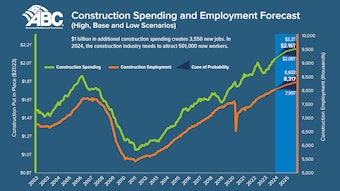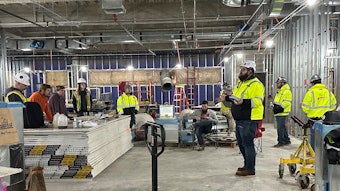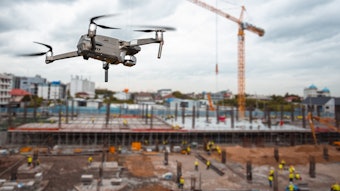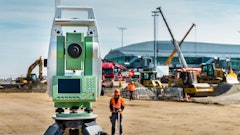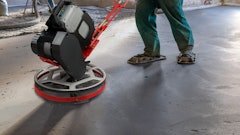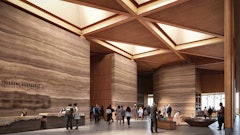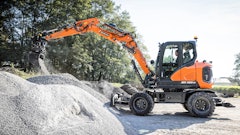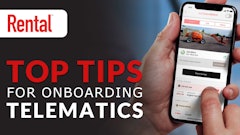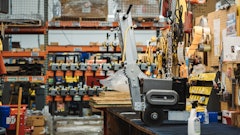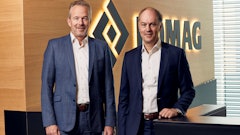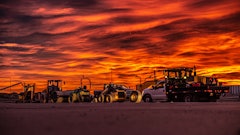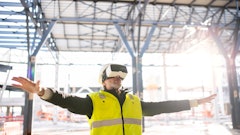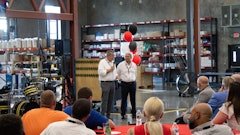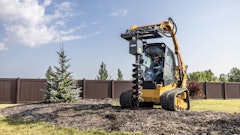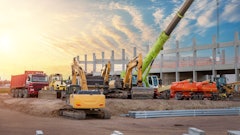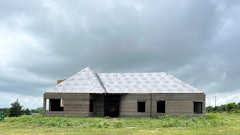
This article is part three of the FULL Report: How Technology Will Deliver the Modular Construction Revolution, a three-part series that highlights why contractors need to adopt offsite construction technology and what technology is currently available.
Use the navigation bar below to maneuver through valuable industry insight:
PART 1: Why Contractors Need to Get Serious about Offsite Construction
PART 2: The Rise of Software for Offsite Construction
PART 3: Offsight Builds Out ERP for Modular, Panelization and Volumetric Construction
DOWNLOAD THE PDF *Save to your desktop for easy reading & reference
FULL Report: How Technology Will Deliver the Modular Construction Revolution
In this deep interview with Offsight Founder and COO Andrew Xue we look at where this specialized software product is now and where it is headed as it seeks to become a standard for plants supplying contractors using modern methods.
Founded in 2020, Offsight bridges the gap between manufacturing resources planning (MRP) for shop-base fabrication and project management software to support manufacturing-blended construction.
The company has raised $6.4 million in two seed rounds. With an employee base in the low double digits, a solid game to cost-effectively land new customers, a partnership with the International Code Council and a well-developed network of other collaborators, they may be more sustainable than many other venture-funded construction-related software companies.
Offsight diverges from many other software offerings for modern methods of construction because it deals less with elements like design for manufacturing and assembly (DFMA) and more with the fabrication and delivery of modules on site. The company works as part of the construction technology ecosystem with integrations with significant players including Revit and Procore.
IRONPROS caught up with Offsight COO Andrew Xue in an April 2023 discovery call.
IRONPROS: So Andrew, you are a growing company, and that is driven by the team of people you have with boots on the ground selling. What does that team look like?
Andrew Xue: I’m just probably one of that team, and the founder is another and then a sales director. We also have a partner program for consultants that work with module factories that help them set up the new factory and help them build their quality manual.
IRONPROS: When I think of that financial decision maker, who may be concerned with fighting SaaS sprawl and doing the due diligence on products, you know, particularly those that are venture funded, they may be happy to see these success factors that will make you more stable than some other entities.
You’re not completely reliant on your internal base of employees to build the business. But once you have secured that new customer, what kind of team do they get for customer success initially during onboarding and then on an ongoing basis?
Andrew Xue: It depends on what stage they are, right? Where is the factory and production process at and what are their needs? This is one big benefit of being vertically and industry focused, because we just have a lot of knowledge in terms of what they need to do. So that vertical analysis allows us to help them much more than a generic software.
New clients get a cloud application manager. But quality of that person is important. One person that we have, used to run quality management at a module factory for like eight years. So, he knows the inner workings of what needs to get done, how things are set up and how to build a quality manual that gets approved by third party inspectors or by the state. All that knowledge, if you don’t have it, you have to hire for it and that can take months, and set you back some money, or maybe you can plan to hire consultants to help you do it. So, we have the knowledge to share with you, we do have some cases where we help our customers interview quality managers and other roles, which is beyond the scope of what most companies do. But since we like to partner with clients, their success is our success.
IRONPROS: Is there a designated contact that each customer gets or does that come on a tiered basis where if you’ve got X number of users or X number of dollars, you wind up getting a designated person who stays with your account.
Andrew Xue: Every customer gets a designated person. So, the growth in the industry is so fast, it makes sense to be very close to all our clients so we can help them. But it depends on the factory. So like, let’s say a manufacturer is one of the biggest clients. In that case, they have multiple dedicated people from Offsight working on their account. It’s not just one person, because they have perhaps six accounts with us, and that one person can’t handle six accounts.
IRONPROS: Again, if I am that cautious enterprise software buyer, they can look at that and realize we’ve got someone here to help us, and they are actually pretty smart, too. But where is Offsight headed? What important initiatives is the company working towards right now?
Andrew Xue: I think we are consistently building up more functionality, and constantly asking what are some core features that clients are looking for? And then, if we can build these features, what would it mean for their success? Because there’s a lot of software out there that isn’t built specifically for this sector or to work with other systems.
So, our main goal is just to offer performant products, like our production tracking, for instance. There, we are tracking all the modules, the panels, the parts, wherever they move and their progress. Our customers can then generate reports required by state regulation or third parties. We have streamlined that process, along with materials management which we added about six months ago.
We’re building up that feature set to kind of do the whole end to end from an MRP perspective. We have labor tracking, which is relatively new to essentially help you track employees’ labor, including labor time, time in and time out. And then we can consolidate that with payroll, so you have like the whole suite of analytics around the factory. We are building in more holistic views now that we have this functionality and the data. Having that put together and having a 1,000 foot view of how healthy the factory is and having those dashboards set up—those are our priorities I guess.
IRONPROS: So when you talk about materials management, are you dealing with this primarily as, like, a warehouse management system (WMS) with bin management and, inventory levels or are you also squaring that with demand from orders in hand and projected orders—how deep are you going into that MRP space?
Andrew Xue: We go fairly deep in some ways. I think the goal over the next probably year or so, is to be a full-on enterprise resource planning (ERP). That’s actually the long-term goal primarily because ERP is right now on really, under the old world older, not very user friendly. The UI is in gray, and the views are more for accountants than they are for plant operations. And that’s just like the reality of solutions out there. So this, in my mind will be the new age ERP, where it has the best of both worlds, and where we could manage operations data really well, as well, as the financial data for the accountants and stuff like that.
IRONPROS: And then for labor tracking, are you finding that a lot of your customers do, in fact, have a union labor force where you have to deal with the union labor and work rules and wage rates and everything like that?
Andrew Xue: Currently, we don’t process payroll, we just do the labor hour tracking. So essentially, the goal would be in this case, to figure out how productive everyone is.
So let’s give an example. Let’s say someone clocks in for eight hours. These are soft—you can see within the eight hours, what did they actually work on, which stations were they were in, which panel they worked with within a building at some point in time. And then ultimately, when you are planning for a project, you can say, “Okay, this project is budgeted for 10,000 labor hours,” and then at a point in production, you can say, “I spent 5,000 hours on these roles already.” And you can pull that from our software. If I spent half the labor hours, how far am I in production?
If I’m only 30% done on the modules, but I spent 50% of my labor, that’s not a good scenario, right? You can look at labor tracking as a way to optimize the workforce for your recruitment operations.
IRONPROS: And then are you getting into more of the supply chain side of it? Or are you really kind of picking up once the materials are in the door?
Andrew Xue: We are part of the supply chain solution and do want to track material data. So once material is just below safety stock, or minimum stock levels, we can create a purchase order, and the purchase order can potentially be shared with suppliers. Then suppliers will send invoices, and we track that whole process of P.O., invoice, paid, and shipment of product.
IRONPROS: And across that process, are you delivering serial, lot or batch tracking for things where you may need to have that kind of traceability?
Andrew Xue: Definitely. We can get very complex based on the supply chain, or I can get multiple suppliers that are supplying the same product at different prices. And, you know, that’s where things get a little bit complicated from that perspective. So a software needs to essentially compensate for those.
IRONPROS: So if a contractor is creating a series of panels for a project, and we’re noticing failures of some of the components we’re putting in there, can you then trace that back through the supply chain to figure out where they came from, and stuff like that?
Andrew Xue: Yeah. So, one of the big things, you can centrally set like a bill of materials (BOM) for a project. So, the BOM that you created has the pick list—it is the set materials that need to be used during a project. If materials that aren’t good or things are not installed correctly, you wind up with waste— essentially, scrap that is thrown out. You want to track that and you want to track when it happens.
So, we do track waste per product per station. Yeah, it was this joining station and then we know where that material came from because there’s a part and a link to it in the application. You want to track the waste rate, which is a percentage per material that you buy. So, if you have 100 screws, or boxes, or panels or whatever product you’re buying, if you scrap 10% that is very high. You want to probably be below 2% to 3% for both of your materials.
And then if you do find a high scrap rate, let’s say it’s 5% but it’s caused by supply quality, you can negotiate better rates, because you have the data. “Hey, you know, the last batch we bought us cost us this percent. Here’s some photos, can you give me a discount?” The software then directly saves the money.
IRONPROS: Is that traceability something that survives the transition to the finished asset, to be used in the course of that lifecycle? Maybe the owner starts to have structural elements failing in a panel, can they then figure out retroactively what’s going on with this?
Andrew Xue: So let’s say, in this one station, the failure rates are very high. And then the scrap rates are high. You then know to address that with your supplier or suppliers, or else you’re going to continue to have these quality issues.
It could be anything, even the design that’s causing it. So, you can kind of pinpoint it before it leaves the factory. The big thing is, once it leaves, the factory delays can get exponentially worse. Or if you find it early, you can kind of catch it. And it won’t delay the project time that much.
IRONPROS: Are you using this application primarily for panels and things that already have components and assemblies and sub-assemblies that might have some degree of mechanical sophistication, a warranty or something that applies?
Andrew Xue: We can do pretty much any type of building component. So, we started out doing volumetric modules, which is the more complicated side of things, but now we can do different panels, bath pods, kitchen pods, prefabricated MEP modules. We actually just got a client in cabinets, so they’re doing joinery and woodworking type things. So, we can deliver any type of building component that has some project-based design related to it, like project-based manufacturing.
IRONPROS: But then if you have in this MEP pre-assembly, we have pumps or compressors or things like that which might have a warranty or other important information, are you able to provide data to support the quality traceability and maybe serial traceability of that over the assets lifecycle, or ability to help the owner do that?
Is the information from within Insight about the panels, components, subassemblies available after the project by living on as part of building information management (BIM)?
Andrew Xue: Potentially. So essentially, what we have is time series data around building a product, right? How the data gets fed back in for when we do the next project, we should make some modifications or whatever to include the design - that more or less could be done.
IRONPROS: So, let’s talk a little bit about the tech stack. And we can take a lifetime on some of this. But, where does the product live in the cloud? What is it made out of from the presentation layer, mid-tier and the back end?
Andrew Xue: We essentially are a multi-tenant software as a service (SaaS) application on Amazon Web Services (AWS). So, everything’s in the cloud, nothing’s on prem. So that kind of drives the whole business. The back end is MySQL. We will have apps for iPad and iPhone, and some of our clients are using Android tablets. We’re developing those in Angular now but plan to move to React later to improve build speeds.
IRONPROS: And then how often are you shipping product?
Andrew Xue: Every two weeks
IRONPROS: So, while you aspire to be more of a complete ERP for volumetric and offsite construction, do you plan to get into delivering the general ledger or even accounts payable and accounts receivable?
Andrew Xue: So, that the accounting side, and our clients may use a NetSuite for the accounting portion of it. But then they’ll use us, instead of buying the manufacturing module for NetSuite, because we will pretty much be built for this type of factory, which is project-base manufacturing.
For a lot of traditional ERPs, they’re actually very good at batch manufacturing. In a past life, I would help set up these factories to do that. I used to work with a lot of ERPs back in a day. And you know, when I started Offsight, I just thought, there has to be a better way to do entry on the factory floor. And all ERPs I’ve ever worked with were painful, like extremely painful getting any data on the floor.
IRONPROS: Yeah, there are a lot of them, and some, as soon as the project is in process, are in another dimension. And then you’d have something like a manufacturing execution system that would maybe pick up from there. Which is another million dollars. And then you have to integrate that MES with ERP
Andrew Xue: So that is why we have an MES built into our production tracking module that’s already included.
IRONPROS: So hey—you got me. I’m sold, but as you are selling to companies in the field, who else are you seeing in these deals? Who are you bumping heads with?
Andrew Xue: It depends. Some people may think about ERP first, and then they’ll look at project management and operations. From that perspective, we’ve seen the big ERPs. And in those situations, if we lose, we come back maybe three, six, nine months later, in some cases they never actually get it deployed, which is unfortunate.
Most of the competition is still paper, in a weird way. Sometimes we have a client that has gotten their plant operational and then later looked for a digital solution, which is probably not the best strategy given that you’re creating habits on the floor.
If you have a new factory, and you want to have this built in from the beginning, right? So certain aspects of it is more of a cultural thing about technology than it is about getting the software itself. So, it ends up being a move to replace the Excel.
I think we’ve come into deals and seen Manufacton, if you’ve heard of those guys, at some point. And Slate Technologies. Those two and some other tools that you might run into are essentially design tools.
IRONPROS: A lot of ERPs will be fine for project-based manufacturing in general. How do you hand that off to generals? And what tools do you allow to make sure that dovetails well with what you’re manufacturing?
Andrew Xue: So that’s kind of the challenge in the industry, right? Like, how can you build a process that is streamlined for whatever you’re building in a software that kind of matches their use cases. But it sucks. A lot of these companies in the early days, maybe pivoted, and instead of doing commercial maybe they also wanted to do multifamily, and then wound up having a panelized business on the side, while you do live volumetric modules.
A lot of these companies accommodate everything, and that’s the kind of thing that ERPs never do well. And that’s kind of what we want to do very well—essentially deliver the flexibility in the project-based production side of things where you’re not overpaying for a set process.
IRONPROS: So, what are the pain points motivating prospects to sign up right now with Offsight?
Andrew Xue: Yeah, it’s demand, right? They’re getting so much demand that they realize they can’t manage it with their existing process. That’s kind of the big factor that we’re seeing here. And that happens with growing markets. And that’s kind of why startups like mine exist. Because if the market isn’t growing, there’s absolutely no reason to change right?
As they invest in growth, they’re going to want a level of quality, of stability, because they’re putting up all this money and they want to know that you have processes in place. With the growth factor that we’re seeing, it is to triple or quadruple over the next five years. And then startups like us, who are essentially well positioned in the market, can take advantage.
IRONPROS: Now let’s talk a little bit about the pricing strategy. So, if I come to you and say: I need this. How much is this going to cost me? How do you figure that out?
Andrew Xue: We actually do it by the square footage of the factory. And then we have modules that you buy, right? We start with the core module, which is production quality, importing that into the core of the business to get you started. Then you can add material management, or you can add labor management, materials issuance management etc. It is not that different than Procore in its business model.
____
Full Report: How Technology Will Deliver the Modular Construction Revolution
Navigate to your next insightful repost:
PART 1: Why Contractors Need to Get Serious about Offsite Construction
PART 2: The Rise of Software for Offsite Construction
PART 3: Offsight Builds Out ERP for Modular, Panelization and Volumetric Construction
DOWNLOAD THE PDF *Save to your desktop for easy reading & reference
FULL Report: How Technology Will Deliver the Modular Construction Revolution
____
